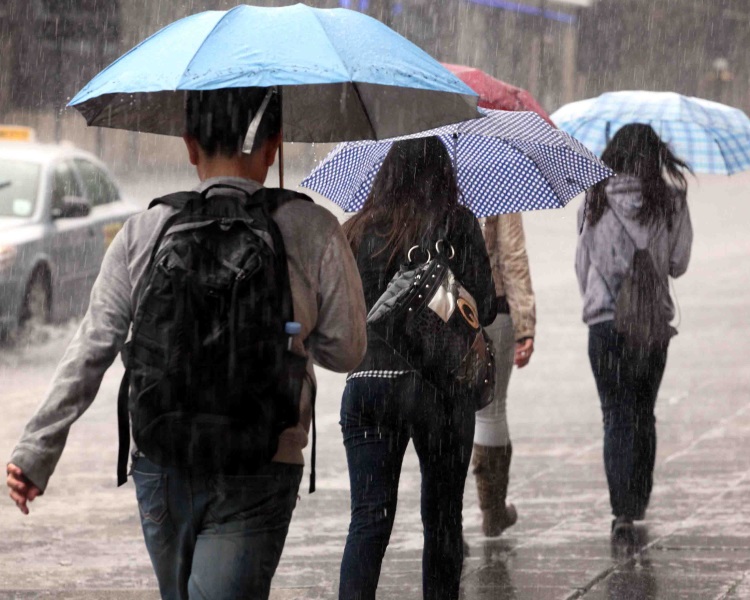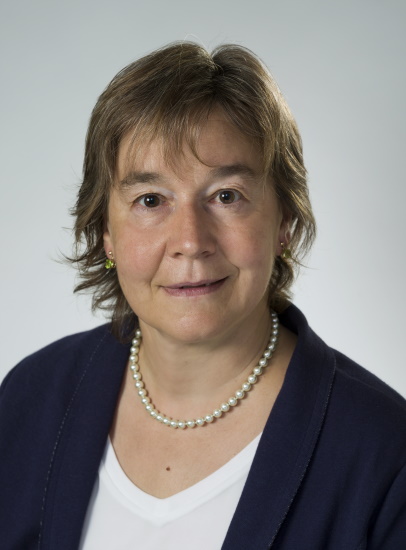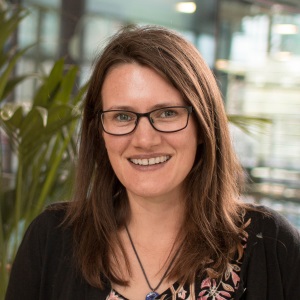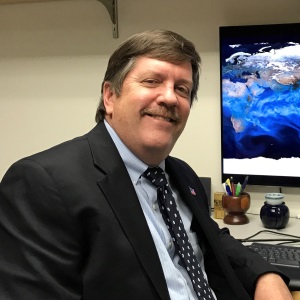Links to external sources may no longer work as intended. The content may not represent the latest thinking in this area or the Society’s current position on the topic.
Intensification of short-duration rainfall extremes and implications for flash flood risks

Scientific discussion meeting organised by Professor Hayley Fowler.
Extreme heavy precipitation is increasing in frequency and intensity, and results from new global sub-daily datasets and high-resolution modelling suggest that precipitation extremes will intensify more than anticipated based upon theoretical considerations. Understanding this process is vital in advancing the theoretical knowledge necessary for a step change in regional prediction from understanding the nature and drivers of precipitation extremes.
Speaker biographies and abstracts are available below. Recorded audio of the presentations is also available below. An accompanying journal issue was published in Philosophical Transactions of the Royal Society A.
Attending this event
This meeting has taken place.
Enquiries: contact the Scientific Programmes team
Organisers
Schedule
Chair

Professor Gabriele Hegerl FRS

Professor Gabriele Hegerl FRS
Gabriele Hegerl is professor of climate system science at the University of Edinburgh. Prior to coming to Edinburgh, she has been at the Max-Planck Institute for Meteorology in Germany, and the University of Washington, Texas A&M and Duke University in the US. Her research focuses on understanding the causes of climate change and using observations to constrain predictions of future climate change. Her work has determined causes of change in temperature, rainfall, and extreme events and she had key roles in Intergovernmental Panel on Climate Change assessments of climate change. Gabriele is a fellow of the Royal Society.
| 09:05 - 09:30 |
UK climate change adaptation and the climate change risk assessment process

The Baroness Brown of Cambridge DBE FREng FRS

The Baroness Brown of Cambridge DBE FREng FRSBaroness Brown is an engineer, with a career spanning senior engineering and leadership roles in industry and academia. Her interests include climate change adaptation and mitigation and the low carbon economy. In this area she currently serves as: Vice Chair of the Committee on Climate Change and Chair of the Adaptation Sub-Committee; non-executive director of the Offshore Renewable Energy Catapult; member of the WEF Global Agenda Council on Decarbonising Energy. She was non-executive director of the Green Investment Bank, she led the King Review on decarbonising transport (2008), and she is the UK’s Low Carbon Business Ambassador. She is a crossbench Peer and a member of the House of Lords European Union Select Committee. |
|
|---|---|---|
| 09:30 - 10:00 |
The INTENSE project: using observations and models to understand the past, present and future of sub-daily rainfall extremes
Extremes of precipitation cause flooding and droughts which can lead to substantial damages to infrastructure and ecosystems and can result in loss of life. Historical in situ sub-daily rainfall observations are essential for the understanding of short-duration rainfall extremes but records are typically not readily-accessible and data are often subject to errors and inhomogeneities. Furthermore, these events are poorly quantified in projections of future climate change, making adaptation to the risk of flash flooding problematic. Consequently, knowledge of the processes contributing to intense, short-duration rainfall is less complete compared with those on daily timescales. The INTENSE project, part of the World Climate Research Programme (WCRP)'s Grand Challenge on 'Understanding and Predicting Weather and Climate Extremes', has used a novel and fully-integrated data-modelling approach to provide a step-change in our understanding of the nature and drivers of global sub-daily rainfall extremes and change on societally relevant timescales. This talk will present findings from the project on the intensification of sub-daily extremes and the role of local-scale thermodynamics and large-scale atmospheric conditions in driving these changes. 
Professor Hayley Fowler, Newcastle University, UK

Professor Hayley Fowler, Newcastle University, UKProfessor Hayley Fowler is Professor of Climate Change Impacts in the School of Engineering at Newcastle University. Her research focuses on improved physical understanding of changing precipitation extremes and providing better projections for climate adaptation. She has pioneered new downscaling techniques to bridge the gap between climate modellers and users of climate scenarios (eg UKCP09 Weather Generator). She is a Fellow of the American Geophysical Union (2018) and a Royal Society Wolfson Research Fellow (2014–2019) for her work on understanding climate change impacts on hydrological systems, extreme rainfall and flooding, following a Philip Leverhulme Prize (2011) and NERC Postdoctoral Fellowship (2006–2010). She leads the GEWEX Hydroclimatology Panel sub-daily precipitation cross-cut, is Chief Editor of Frontiers in Interdisciplinary Climate Studies and is a Contributing Author to the Water Cycle and Extremes Chapters for the WGI IPCC 6th Assessment Report. |
|
| 10:00 - 10:30 | Discussion | |
| 10:30 - 11:00 | Coffee | |
| 11:00 - 11:30 |
The physical basis for changes in precipitation extremes at different durations
Extreme precipitation is predicted to increase in intensity with global warming, but the projected rate of increase varies across different regions of the world and across seasons. In this talk, Professor O'Gorman will discuss the physical factors that contribute to changes in extremes precipitation and whether they differ between subdaily and daily extremes. Professor O'Gorman will also discuss results from idealized high-resolution models and the use of machine learning to improve simulation of extreme precipitation in global climate models. 
Professor Paul O'Gorman, Massachusetts Institute of Technology, USA

Professor Paul O'Gorman, Massachusetts Institute of Technology, USAPaul O'Gorman is a Professor of Atmospheric Science at MIT. His research interests concern the dynamics of the atmosphere, the hydrological cycle, and climate change. His recent research has focused on the response of precipitation and the extratropical storm tracks to climate change, and the potential of machine learning to improve climate models. |
|
| 11:30 - 12:00 |
Linking increases in hourly precipitation extremes to atmospheric temperature and moisture changes
While summer rain storms are very intermittent, chaotic and influenced by multiple atmospheric drivers, some statistics of short duration precipitation actually display surprisingly simple, regular behaviour. As an example, 10-min rainfall extremes derived from Dutch observations show a very regular dependency of 13% per degree over an almost 20-degree dew point temperature range. Similar behaviour has also been found in hourly precipitation observations. For dew point temperature each degree of warming reflects 6-7% more moisture in the air, following from the well-known Clausius-Clapeyron (CC) relation which is the cornerstone to understand and quantify the influence of the climate change on precipitation extremes. According to the above finding, however, precipitation intensities may be increasing with temperature at a rate twice the commonly expected CC rate. But are they, and if so, what are the impacts of these much stronger increases in precipitation extremes? These questions are at the heart of a "vivid" scientific debate. While it has become clear that these so-called scaling rates cannot be used as a straightforward predictor of the influence of warming on precipitation extremes, it will be illustrated that they are useful to understand how the most extreme rainfall events could respond to global warming. 
Dr Geert Lenderink , KNMI and Technical University Delft, The Netherlands

Dr Geert Lenderink , KNMI and Technical University Delft, The NetherlandsGeert Lenderink has more than 20 years’ experience with climate change research and the development of weather and climate models. He completed his PhD thesis on the thermohaline ocean circulation. He (co-)developed a unified cloud and turbulence scheme that is presently operational in a regional climate model (RACMO) and in a numerical weather prediction model (Harmonie, operated by a number of European countries). He developed the methodological framework that is used in two generations of climate change scenarios for the Netherlands, issued in 2006 and 2014. Presently, his main research theme is about understanding the role of dynamic and thermodynamic factors in future changes of short-duration precipitation extremes, and he wrote a number of influential papers showing the possibility of a precipitation response beyond the expected Clausius-Clapeyron rate. He is (co)author of 74 papers (26 first author) and has a H-index of 32. |
|
| 12:00 - 12:30 | Discussion |
Chair

Dr Michael Wehner, Lawrence Berkeley National Laboratory, USA

Dr Michael Wehner, Lawrence Berkeley National Laboratory, USA
Dr Michael F Wehner is a senior staff scientist in the Computational Research Division at the Lawrence Berkeley National Laboratory. Dr Wehner’s current research concerns the behaviour of extreme weather events in a changing climate, especially heat waves, intense precipitation, drought and tropical cyclones. Before joining the Berkeley Lab in 2002, Wehner was an analyst at the Lawrence Livermore National Laboratory in the Program for Climate Modeling Diagnosis and Intercomparison. He is the author or co-author of over 170 scientific papers and reports. He was a lead author for both the 2013 Fifth Assessment Report of the Intergovernmental Panel on Climate Change and the 2nd, 3rd and 4th US National Assessments on climate change. He is currently a lead author for the upcoming Sixth Assessment Report of the Intergovernmental Panel on Climate Change. Dr Wehner earned his masters degree and PhD in nuclear engineering from the University of Wisconsin-Madison, and his bachelors degree in Physics from the University of Delaware.
| 13:30 - 14:00 |
What can storm-scale models tell us about climate change impacts on extreme rainfall?
Simulating storms that cause extreme rainfall accumulations has been a long-standing challenge in weather and climate modelling. Tremendous improvements have been made over recent decades due to advances in models and computational resources that nowadays allow us to explicitly simulate storm-scale dynamics within models. This results in a step-improvement in simulating extreme rainfall and allows unprecedented insights into climate change impacts on rainfall extremes. This talk will exemplify the added value of simulating extreme rainfall producing storms in storm-scale models compared to coarser-resolution models. It will be shown how the most important storm characteristics that are associated with flooding (eg, rainfall rates, storm movement speed, and storm spatial extent) are simulated in storm-scale models and how these characteristics are projected to change in future climates. Storm-scale model-based changes in future rainfall extremes will be summarized and areas of uncertainty and opportunities for research will be highlighted. 
Dr Andreas Prein, National Center for Atmospheric Research, USA

Dr Andreas Prein, National Center for Atmospheric Research, USADr Andreas Prein is a scientist at the National Center for Atmospheric Research (NCAR) in Boulder, Colorado, USA, where he is working in the Capacity Center for Climate and Weather Extremes. Dr Prein has a PhD in Physics and a Master in Environmental System Sciences from the University of Graz in Austria. He is an expert in high-resolution climate modelling and observational data analysis. He is interested in the interaction between the climate system and weather extremes. Most of his work focuses on convective extreme events such as extreme precipitation and hail. |
|
|---|---|---|
| 14:00 - 14:30 |
Using a convection permitting model ensemble for projecting future change in precipitation extremes
For the first time internationally a model at a resolution on par with operational weather forecast models has been used for national climate scenarios. As part of the UK Climate Projections (UKCP) project, an ensemble of 12 projections at 2.2km resolution have been carried out over the UK. These were launched in September 2019, with the aim of providing an improved simulation of extreme precipitation and also other high-impact events at local scales for the coming decades. At such high (2.2km) resolution, convection can be represented explicitly (‘permitted’) without the need for a parameterisation scheme, leading to a much more realistic representation of hourly precipitation characteristics, including extremes. In this talk initial results from the UKCP local (2.2km) projections, including changes in hourly precipitation extremes, will be presented. 
Dr Elizabeth Kendon, Met Office Hadley Centre, UK

Dr Elizabeth Kendon, Met Office Hadley Centre, UKDr Elizabeth Kendon has 13 years of experience working at the Met Office Hadley Centre on regional climate modelling. She currently leads a team of scientists using very high resolution (kilometre-scale) models to study climate change, with a main focus on gaining a better understanding of extreme rainfall processes and their future change. Her work has been pioneering in the field of convection-permitting climate modelling, with a high profile paper in Nature Climate Change (Kendon et al, 2014) and in 2018 she received the LG Groves Memorial Meteorology Prize in recognition of this work. She is currently leading work on the first ensemble of climate simulations at convection-permitting scale over the UK for the next set of climate projections (UKCP18). These will be delivered in September 2019, and will be the first time internationally that convection-permitting projections will be provided in national climate scenarios. She also recently worked on the FCFA IMPALA project involving convection-permitting climate simulations over Africa, with the first future change results published in Nature Comms (Kendon et al, 2019). Lizzie also has a key role in the ERC INTENSE project analysing intense rainfall, NERC FUTURE-STORMS project looking at changes in high impact events and is participating in the EUCP project which includes carrying out coordinated convection-permitting climate simulations over Europe. Lizzie has a PhD in atmospheric science from Imperial College London (2005), an MSC with distinction from Manchester University (1999) and a 1st class BAHons and MSci in Natural Sciences (Physics) from Cambridge University (1998). |
|
| 14:30 - 15:00 | Discussion | |
| 15:00 - 15:30 | Tea | |
| 15:30 - 16:00 |
The role of stratification changes for the future European precipitation climate
There is tremendous interest into future changes of the precipitation climate, as precipitation touches upon a large number of human activities. The scientific argumentation often invokes changes in large-scale circulation and absolute humidity. Here another important aspect is considered, namely the role of stratification (or lapse-rate) changes. These changes are closely linked to climate change, as global warming will imply substantial shifts in the moist-adiabatic lapse rate. Lapse-rate changes have already been identified to instigate important impacts in the tropics, but they are also important for European climate change. Here an overview on lapse-rate changes is provided, together with examples from two recent publications. It is demonstrated that lapse-rate changes are particularly important for the European summer climate and strongly influence the projected drying in the Mediterranean, as well as short-duration precipitation events and the associated Clausius-Clapeyron scaling. It is argued that lapse-rate changes can be considered more reliable than circulation changes, and thus may help adding more confidence to some specific aspects of European climate change projections. 
Professor Christoph Schär, ETH Zurich, Switzerland

Professor Christoph Schär, ETH Zurich, SwitzerlandProfessor Christoph Schär obtained his Physics degree and PhD in atmospheric dynamics from ETH Zurich. He had post-doctoral positions in the USA (Yale, New Haven; University of Washington, Seattle). He has been a professor at ETH since 1992. He served on a number of committees, among these as a member and chairman of the Scientific Advisory Committee of the ECMWF (Reading, UK), in the editorial boards of several leading journals, as a contributing author of the 3rd and 4th IPCC assessment reports, and as a lead author of the 5th IPCC assessment report. He and his group have expertise in atmospheric dynamics and numerical modelling. His recent work addresses the development and exploitation of high-resolution climate models, with a particular view to better understand heavy precipitation events. |
|
| 16:00 - 16:30 |
Using high resolution modelling to understand the urban influence
With the ever growing population living in cities worldwide, it is increasingly important to understand how the expanding cities influence their own climate. The urban environments' effect on temperature, referred to as the urban heat island (UHI), generally means urban environments are several degrees warmer than the surrounding region. While there are many factors that influence the UHI intensity, these are reasonably well understood. The influence of urban environments on precipitation is more complicated and involves the various ways in which the city (including the UHI) can alter the local circulation of the atmosphere. Here Jason Evans discusses several mechanisms to alter the local circulation and impact precipitation over urban areas. He suggests that large cities within the tropics (on coasts) are ideal places to observe these effects and show some results of studies looking at Kuala Lumpur, Malaysia, and Jakarta, Indonesia. In order for climate models to capture the UHI and changes in local circulation, resolutions at the kilometre scale are required. 
Professor Jason Evans, University of New South Wales, Australia

Professor Jason Evans, University of New South Wales, AustraliaProfessor Jason Evans gained his PhD from the Australian National University before taking up a research position at Yale University in the USA. He is currently a Professor in the Climate Change Research Centre at the University of New South Wales, Sydney, Australia. He is a chief investigator in the Australian Research Council Centre of Excellence for Climate Extremes. He is co-Chair of the Global Energy and Water Exchanges (GEWEX) Hydroclimate Panel and a member of the Science Advisory Team of the Coordinated Regional Downscaling Experiment (CORDEX), both elements of the World Climate Research Programme. He is a lead author of the IPCC special report on Climate Change and Land, and editor of the Journal of Climate. His research focuses on the climate system particularly in regards to land-atmosphere interactions, the water cycle and regional climate change. |
|
| 16:30 - 17:00 | Discussion |
Chair

Professor Hayley Fowler, Newcastle University, UK

Professor Hayley Fowler, Newcastle University, UK
Professor Hayley Fowler is Professor of Climate Change Impacts in the School of Engineering at Newcastle University. Her research focuses on improved physical understanding of changing precipitation extremes and providing better projections for climate adaptation. She has pioneered new downscaling techniques to bridge the gap between climate modellers and users of climate scenarios (eg UKCP09 Weather Generator). She is a Fellow of the American Geophysical Union (2018) and a Royal Society Wolfson Research Fellow (2014–2019) for her work on understanding climate change impacts on hydrological systems, extreme rainfall and flooding, following a Philip Leverhulme Prize (2011) and NERC Postdoctoral Fellowship (2006–2010). She leads the GEWEX Hydroclimatology Panel sub-daily precipitation cross-cut, is Chief Editor of Frontiers in Interdisciplinary Climate Studies and is a Contributing Author to the Water Cycle and Extremes Chapters for the WGI IPCC 6th Assessment Report.
| 09:00 - 09:30 |
Decoupling increase in precipitation extremes from changes in urban stormwater flooding
It is well accepted that warmer temperatures lead to greater moisture holding capacity for the atmosphere, resulting in bigger downpours, creating larger design precipitation intensities and possibly less secure flood infrastructure especially in urban areas. What is less appreciated is the importance pre-storm conditions have on urban stormwater infrastructure, especially in locations that contain significant water bodies. This presentation uses four urban case studies from the United States, Australia and Thailand to illustrate the differing impacts of warming on urban flood security. Each of these locations pose unique modelling challenges, given the near-continuous change urban stormwater networks undergo. It is shown that in spite of this change, there is clear evidence that urban flood security is compromised as a result of rise in temperature, a trend that will only worsen as time goes on. 
Professor Ashish Sharma, University of New South Wales, Australia

Professor Ashish Sharma, University of New South Wales, AustraliaAshish Sharma is a Professor of Hydrology and Water Resources at the University of New South Wales. He also serves as the President of the International Association of Hydrologic Sciences – Commission on Statistical Hydrology. He has varied research interests encompassing many aspects of hydroclimatology, and a focus on engineering uptake and solutions to some of the biggest challenges we are facing worldwide. Ashish publishes actively in Stochastic Hydrology, Treatment of Uncertainty in Natural Systems (using Bayesian and other methods), Treatment of Systematic Biases in Models, Innovative Remote Sensing Applications including those for Flood Estimation, and a range of problems related to how warmer temperatures will change hydrological knowhow and practice over time. Ashish’s recent and older papers can be found on Google Scholar. |
|
|---|---|---|
| 09:30 - 10:00 |
Challenges and opportunities in estimating impacts of climate change on future floods
There is currently a significant debate in the scientific community regarding both the direction and magnitude of possible changes to flooding as a result of climate change. On the one hand, the global intensification of extreme rainfall combined with increases in sea level point to potentially dramatic increases in flood risk; on the other hand, instrumental evidence of historical flow data generally shows little change, or even a decline in the magnitude of large runoff events. This presentation will highlight the complex causal processes involved in translating large-scale atmospheric trends into measures of flood hazard, and identify some key limitations in the current generation of observational networks and modelling capabilities. To accelerate progress, possible directions forward are proposed, suggesting that an internationally coordinated effort is needed if we are to answer critical questions regarding the implications of climate change on flood risk. 
Professor Seth Westra, University of Adelaide, Australia

Professor Seth Westra, University of Adelaide, AustraliaSeth is the Theme Leader for Food, Water and Agriculture within the Faculty of Engineering, Computer and Mathematical Sciences at the University of Adelaide, and has over 17 years’ research and consulting experience across both academia and industry. Seth has contributed to the fields of hydrology, water resource assessments and flood and climate risk, combining a focus on scientific rigour with a passion for ensuring research can serve industry and societal needs. He has published over 80 journal and conference papers, co-authored three chapters for Australia’s national flood guidance document (Australian Rainfall and Runoff), and worked on multiple industry projects related to climate risk. |
|
| 10:00 - 10:30 | Discussion | |
| 10:30 - 11:00 | Coffee | |
| 11:00 - 12:30 |
Panel discussion

Murray Dale, JBA Consulting, UK

Murray Dale, JBA Consulting, UKMurray is a hydrometeorologist and a Technical Director at JBA Consulting with 26 years’ professional experience. He has worked with climate projections from meteorological models for twenty years and was involved in testing and review of both UKCP18 and UKCP09 projections prior to their release. With strong links to the Met Office, where he was Hydrology Team leader from 2003 to 2005, he was instrumental in the development of the Extreme Rainfall Alert (ERA) service and the subsequent, surface water flood forecasting service operated by the Flood Forecasting Centre (FFC). Murray led the UK Water Industry Research project, Rainfall intensity for sewer design, delivered in 2017, involving the Met Office and Newcastle University, which developed new design guidance for high-intensity rainfall changes due to climate change. He is a regular presenter at national and international conferences and has and authored over 20 journal papers and conference proceedings related to hydrometeorology and climate resilience. 
Dr Harriet Orr, Environment Agency, UK

Dr Harriet Orr, Environment Agency, UKDr Harriet Orr is a research scientist specialising in climate change. She leads a team of scientists and work with technical specialists in academic and research institutions and other agencies. Harriet’s team makes sure the right research is in place to meet current and future needs. They come up with practical solutions to help staff within and outside the Environment Agency plan for and manage the effects of climate change. The group set out the need for research, sometimes commissioning this, doing it themselves or working in partnership with others. They help shape the activities of research funders and steer projects. Harriet’s team does a lot of translation of science as well as sharing their agenda and the needs of science users with the wider research community. Harriet currently chairs the UKCP18 Non-Government User Group which seeks ways to ensure climate projections meet user needs. 
Nalan Senol Cabi, Willis Towers Watson, UK

Nalan Senol Cabi, Willis Towers Watson, UKNalan is the Senior Lead Flood Specialist in the Model Research and Evaluation team. In her role, she is responsible for interpreting, assessing and validating catastrophe risk models related to flood. She also provides knowledge and direction for client specific bespoke solutions to understand and manage flood risk across international territories. Nalan spent five years as a Senior Hydraulic Engineer on developing catastrophe flood models. She has worked extensively in the flood hazard component of inland flood models, specifically in hydraulic modelling, quality assurance/quality check processes and hazard validation and calibration. Prior to that, Nalan was employed at engineering consulting and design companies in the US as a Civil Engineer where she spent five years performing engineering tasks associated with hydrologic/hydraulic analysis. Nalan holds an MSc from Georgia Institute of Technology in Atlanta, GA. She holds an MSc and a BSc in Civil Engineering from Middle East Technical University, Ankara, Turkey. |
Chair

Dr Gabriele Villarini, University of Iowa, USA

Dr Gabriele Villarini, University of Iowa, USA
Gabriele Villarini is an associate professor in the Department of Civil and Environmental Engineering at the University of Iowa, and the Director of IIHR-Hydroscience & Engineering. He received his PhD in Civil and Environmental Engineering in 2008 from the University of Iowa; he also received his Executive MBA from the Tippie School of Business at the University of Iowa in 2018. His research interests focus on flood hydrology, extreme events, hydroclimatology, and climate predictions and projections. He has received a number of national and international awards, including the “Hydrological Sciences Outstanding Young Scientist Award” by the European Geosciences Union (2013) and the James B. Macelwane Medal by the American Geophysical Union (2016). He is a Fellow of the American Geophysical Union (2016). He has published over 170 peer-reviewed papers, including articles in Nature, Science, Nature Climate Change and the Proceedings of the National Academy of Sciences.
| 13:30 - 14:00 |
Understanding from hurricanes, climate change and extreme forecast attribution

Dr Michael Wehner, Lawrence Berkeley National Laboratory, USA

Dr Michael Wehner, Lawrence Berkeley National Laboratory, USADr Michael F Wehner is a senior staff scientist in the Computational Research Division at the Lawrence Berkeley National Laboratory. Dr Wehner’s current research concerns the behaviour of extreme weather events in a changing climate, especially heat waves, intense precipitation, drought and tropical cyclones. Before joining the Berkeley Lab in 2002, Wehner was an analyst at the Lawrence Livermore National Laboratory in the Program for Climate Modeling Diagnosis and Intercomparison. He is the author or co-author of over 170 scientific papers and reports. He was a lead author for both the 2013 Fifth Assessment Report of the Intergovernmental Panel on Climate Change and the 2nd, 3rd and 4th US National Assessments on climate change. He is currently a lead author for the upcoming Sixth Assessment Report of the Intergovernmental Panel on Climate Change. Dr Wehner earned his masters degree and PhD in nuclear engineering from the University of Wisconsin-Madison, and his bachelors degree in Physics from the University of Delaware. |
|
|---|---|---|
| 14:00 - 14:30 |
Operational event attribution in Europe
These are exciting times for the science of event attribution, research that aims to elucidate the links between extreme weather events and climate variability and change. With a rising toll of extreme weather, including damaging heavy rainfall and flooding, has come a rising demand for authoritative information about the risks of such events particularly from the public, the media, and from policy makers. To meet this demand, operational event attribution services are starting to be developed. At the Met Office, we are part of a consortium that is developing operational event attribution for Europe under the Copernicus Climate Change Service funded by the European Commission, initially as a prototype service. Professor Stott will describe these new developments with an emphasis on the attribution of extreme rainfall events. This includes new research demonstrating the value of high-resolution modelling for detecting changes in the probability of occurrence of the high daily rainfall totals seen during the flooding in Yorkshire in Autumn, 2019. 
Professor Peter Stott, Met Office and University of Exeter, UK

Professor Peter Stott, Met Office and University of Exeter, UKProfessor Peter Stott is Science Fellow in Attribution at the Met Office Hadley Centre and Professor of Detection and Attribution at the University of Exeter. At the Met Office, he leads a research team developing methods for attributing the causes of extreme weather events to human and natural factors. At Exeter University, he leads a project called Climate Stories which brings together poets, printmakers, singer-songwriters and climate scientists to develop new ways of thinking about climate change. He is a co-editor of annual reports which explain extreme weather events from a climate perspective. He was Coordinating Lead Author for Chapter 10 (Detection and attribution of climate change: from global to regional) of the Working Group 1 of the IPCC’s Fifth Assessment Report. He has a strong interest in public outreach and engagement and appeared in the BBC documentary presented by Sir David Attenborough, Climate Change: The Facts. |
|
| 14:30 - 15:00 | Discussion | |
| 15:00 - 15:30 | Tea | |
| 15:30 - 16:00 |
Using observational constraints on projections of change in mean and intense precipitation
Observed changes in mean and intense precipitation provide potentially powerful constraints on future changes when using detection and attribution methods. Some of the constraints arising suggest that CMIP class climate models underestimate some of the changes expected. Monthly precipitation changes in the tropics and subtropics are at the upper edge of simulated changes with CMIP6, with increased rainfall in the wettest third of the tropics and flat or decreased rainfall in the dry part. This diagnostic relies on detecting wet and dry regions for each month and diagnosing total rainfall in these regions. Splitting satellite/in situ blended data into driest to wettest climatological regions shows that climate models follow consistent physics between them and with data, even if features are misplaced, and even with high variability in the location of the features. In mid-high latitudes, increased precipitation is detectible, but changes are impacted by modes of variability such as the North Atlantic Oscillation. Intense (1-day) precipitation has shown a detectible and attributable change, with significant uncertainty associated with observational data. Changes recorded in the satellite and in situ record contain increasingly powerful information on changing precipitation. 
Professor Gabriele Hegerl FRS

Professor Gabriele Hegerl FRSGabriele Hegerl is professor of climate system science at the University of Edinburgh. Prior to coming to Edinburgh, she has been at the Max-Planck Institute for Meteorology in Germany, and the University of Washington, Texas A&M and Duke University in the US. Her research focuses on understanding the causes of climate change and using observations to constrain predictions of future climate change. Her work has determined causes of change in temperature, rainfall, and extreme events and she had key roles in Intergovernmental Panel on Climate Change assessments of climate change. Gabriele is a fellow of the Royal Society. |
|
| 16:00 - 16:15 | Discussion | |
| 16:15 - 17:00 |
Panel discussion

Dr Michael Wehner, Lawrence Berkeley National Laboratory, USA

Dr Michael Wehner, Lawrence Berkeley National Laboratory, USADr Michael F Wehner is a senior staff scientist in the Computational Research Division at the Lawrence Berkeley National Laboratory. Dr Wehner’s current research concerns the behaviour of extreme weather events in a changing climate, especially heat waves, intense precipitation, drought and tropical cyclones. Before joining the Berkeley Lab in 2002, Wehner was an analyst at the Lawrence Livermore National Laboratory in the Program for Climate Modeling Diagnosis and Intercomparison. He is the author or co-author of over 170 scientific papers and reports. He was a lead author for both the 2013 Fifth Assessment Report of the Intergovernmental Panel on Climate Change and the 2nd, 3rd and 4th US National Assessments on climate change. He is currently a lead author for the upcoming Sixth Assessment Report of the Intergovernmental Panel on Climate Change. Dr Wehner earned his masters degree and PhD in nuclear engineering from the University of Wisconsin-Madison, and his bachelors degree in Physics from the University of Delaware. 
Professor Hayley Fowler, Newcastle University, UK

Professor Hayley Fowler, Newcastle University, UKProfessor Hayley Fowler is Professor of Climate Change Impacts in the School of Engineering at Newcastle University. Her research focuses on improved physical understanding of changing precipitation extremes and providing better projections for climate adaptation. She has pioneered new downscaling techniques to bridge the gap between climate modellers and users of climate scenarios (eg UKCP09 Weather Generator). She is a Fellow of the American Geophysical Union (2018) and a Royal Society Wolfson Research Fellow (2014–2019) for her work on understanding climate change impacts on hydrological systems, extreme rainfall and flooding, following a Philip Leverhulme Prize (2011) and NERC Postdoctoral Fellowship (2006–2010). She leads the GEWEX Hydroclimatology Panel sub-daily precipitation cross-cut, is Chief Editor of Frontiers in Interdisciplinary Climate Studies and is a Contributing Author to the Water Cycle and Extremes Chapters for the WGI IPCC 6th Assessment Report. 
Professor Paul O'Gorman, Massachusetts Institute of Technology, USA

Professor Paul O'Gorman, Massachusetts Institute of Technology, USAPaul O'Gorman is a Professor of Atmospheric Science at MIT. His research interests concern the dynamics of the atmosphere, the hydrological cycle, and climate change. His recent research has focused on the response of precipitation and the extratropical storm tracks to climate change, and the potential of machine learning to improve climate models. 
Dr Andreas Prein, National Center for Atmospheric Research, USA

Dr Andreas Prein, National Center for Atmospheric Research, USADr Andreas Prein is a scientist at the National Center for Atmospheric Research (NCAR) in Boulder, Colorado, USA, where he is working in the Capacity Center for Climate and Weather Extremes. Dr Prein has a PhD in Physics and a Master in Environmental System Sciences from the University of Graz in Austria. He is an expert in high-resolution climate modelling and observational data analysis. He is interested in the interaction between the climate system and weather extremes. Most of his work focuses on convective extreme events such as extreme precipitation and hail. 
Professor Seth Westra, University of Adelaide, Australia

Professor Seth Westra, University of Adelaide, AustraliaSeth is the Theme Leader for Food, Water and Agriculture within the Faculty of Engineering, Computer and Mathematical Sciences at the University of Adelaide, and has over 17 years’ research and consulting experience across both academia and industry. Seth has contributed to the fields of hydrology, water resource assessments and flood and climate risk, combining a focus on scientific rigour with a passion for ensuring research can serve industry and societal needs. He has published over 80 journal and conference papers, co-authored three chapters for Australia’s national flood guidance document (Australian Rainfall and Runoff), and worked on multiple industry projects related to climate risk. |
